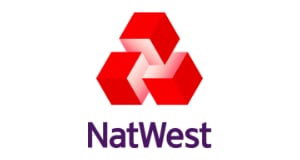Offset Remortgage

Are you a UK homeowner looking to remortgage your property? If so, you may have come across the term “offset remortgage” in your research.
- We find you the best mortgage deal from our panel of top lenders
- Our bespoke technology makes everything easy
- Our friendly, expert team supports you all the way
- Access to exclusive offers
- Great mortgage deals without the hassle


Reduce your monthly payments and pay off your mortgage faster with an offset remortgage from Believe Money
Are you a UK homeowner looking to remortgage your property? If so, you may have come across the term “offset remortgage” in your research.
This type of remortgage can offer significant advantages over traditional remortgages, including reducing your interest costs, providing greater flexibility in repayments, and helping you pay off your mortgage faster.
At Believe Money, we understand that remortgaging can be a complex process, and we want to make sure that you have all the information you need to make an informed decision about which type of remortgage is right for you.
In this article we’ll explain what an offset remortgage is, the advantages it offers over traditional remortgages, and how you can go about getting one.
So, let’s get started.
What is an offset mortgage?
Offset mortgages are a type of mortgage that allows you to use your savings to reduce the amount of interest you pay on your mortgage. This type of mortgage is called an “offset” mortgage because the amount of savings you have is offset against the amount of mortgage debt you owe.

Comparing a traditional remortgage vs offset remortgage
Traditional remortgages
Traditional remortgages involve switching your existing mortgage to a new lender or a new deal with your existing lender. The main aim is to reduce your monthly repayments or secure a better interest rate.
With a traditional remortgage, you borrow a new mortgage amount to pay off your old mortgage and any fees, such as early repayment charges or exit fees, that may apply. You then make repayments to the new lender, usually over a longer period.
Offset remortgages
Offset remortgages work a little differently. They also involve switching your existing mortgage to a new lender or a new deal with your existing lender. However, instead of taking out a new mortgage amount, you use your savings to offset the amount of interest you pay on your mortgage.
This means that you keep your savings in a linked account with your mortgage provider, and the amount you have saved is subtracted from the amount of interest charged on your mortgage. As a result, you can pay off your mortgage faster or reduce your monthly repayments.
How an offset remortgage works
When you take out an offset remortgage, your savings are linked to your mortgage account. This means that the balance of your savings account is subtracted from the balance of your mortgage account when your mortgage interest is calculated.
For example, if you have a mortgage of £200,000 and savings of £50,000, you would only pay interest on £150,000 of your mortgage.
Types of offset remortgages available:
There are two main types of offset remortgages available: current account mortgages and savings account mortgages.
-
Current account mortgages: With this type of offset remortgage, your mortgage and current account are combined into one account. This means that any money you have in your current account is offset against your mortgage debt. For example, if you have a mortgage debt of £150,000 and a current account balance of £20,000, you would only pay interest on £130,000 of your mortgage.
-
Savings account mortgages: With this type of offset remortgage, your savings are held in a separate savings account. The balance of your savings account is then offset against your mortgage debt. For example, if you have a mortgage debt of £200,000 and savings of £50,000 in a savings account, you would only pay interest on £150,000 of your mortgage.
What is a full offset remortgage?
With a full offset remortgage, your savings and current account balance are fully offset against your mortgage balance. This can help you to save a significant amount of money on interest payments over the life of your mortgage.
What is a partial offset remortgage?
With a partial offset remortgage, only a portion of your savings and current account balance is offset against your mortgage balance. This can be a good option if you want to keep some of your savings accessible while still reducing your mortgage repayments.
What is an interest only offset mortgage?
An interest-only offset mortgage is a type of mortgage product that allows you to pay only the interest on your mortgage each month, without repaying the capital.
With an interest-only offset mortgage, your monthly payment is made up only of the interest due on the outstanding balance of the mortgage. You’re not required to make any capital repayments, which means that the outstanding balance of the mortgage remains the same throughout the mortgage term.
The savings and current account balances that are linked to the mortgage are used to offset the interest charged on the mortgage. The balance of the savings or current account is subtracted from the outstanding mortgage balance before the interest is calculated. This can result in significant interest savings, as the interest is only calculated on the net amount of the mortgage.
An interest-only offset mortgage can be riskier than a traditional repayment mortgage, as you’re not repaying any capital each month. This means that you’ll need to have a clear plan for how you will repay the outstanding balance at the end of the mortgage term.
Benefits of an offset remortgage
There are numerous benefits to taking out an offset remortgage, not least:
Interest savings
By offsetting your mortgage with your savings and/or current account, you can reduce the amount of interest you pay on your mortgage. This is because the balance in your savings and/or current account is deducted from the outstanding mortgage balance when interest is calculated, which can result in significant interest savings.
Flexible payments
With an offset remortgage, you can make overpayments and underpayments, as well as take payment holidays. This flexibility can be particularly helpful if your income is irregular or you want to make larger payments in some months and smaller payments in others.
Reduced mortgage term
By making overpayments on your mortgage, you can reduce the term of your mortgage, which means you can pay off your mortgage faster and save on interest payments over the life of the loan.
Tax benefits
Because the money you put into an offset account is not technically earning interest, you may be able to reduce your taxable income. This can be particularly beneficial for higher-rate taxpayers.
Greater control
By linking your savings and/or current account to your mortgage, you can see exactly how much money you have available to you and how much of it is being used to offset your mortgage. This can give you greater control over your finances and help you manage your money more effectively.
Risks of an offset remortgage
While an offset remortgage can offer several benefits, there are also some risks and potential drawbacks that should be considered:
Higher interest rates
Offset remortgages can come with slightly higher interest rates than other types of mortgages. This is because they offer more flexibility and additional benefits. It’s essential to compare the interest rates of different mortgages to determine whether the added benefits of an offset remortgage are worth the higher interest rate.
Limited savings access
When you link your savings and/or current account to your mortgage, you are essentially putting that money on hold. You won’t be able to access those savings until you pay down your mortgage balance. This can be a disadvantage if you need access to your savings in an emergency.
Reduced interest on savings
While the money in your savings and/or current account is offsetting your mortgage, it is not earning interest. This means you may lose out on interest payments you would have received if you kept your savings in a separate account.
Early repayment charges
Many offset remortgages come with early repayment charges, which can be a significant cost if you need to pay off your mortgage early. It’s important to check the terms and conditions of any mortgage you are considering to understand the fees you might incur.
Who can take out an offset remortgage?
Most people who own a property and have an existing mortgage can consider taking out an offset remortgage. However, there are some requirements that applicants must meet to be eligible for an offset remortgage:
-
Equity in the property: Generally, lenders require that you have a certain amount of equity in your property before they will consider offering an offset remortgage. The amount of equity required can vary depending on the lender.
-
Good credit history: Lenders will typically require that you have a good credit history, as they will need to assess your ability to make regular mortgage payments.
-
Adequate income: You will need to demonstrate that you have a regular and sufficient income to afford the monthly mortgage payments.
-
Savings or current account: You will typically need to have savings or a current account with the lender offering the offset remortgage, as these accounts will be used to offset the interest charged on the mortgage.
-
Mortgage term: The length of the remaining mortgage term will also be a factor when considering whether to take out an offset remortgage. Some lenders may have restrictions on the minimum or maximum length of the mortgage term.

What is the application process for an offset remortgage?
The application process for an offset remortgage is similar to that of a traditional remortgage, but with additional steps to set up the offset facility. Typically, the application process for an offset remortgage looks like:

Research and compare lenders
Start by researching and comparing different lenders and their offset remortgage products. Consider factors such as interest rates, fees, and eligibility requirements.
Get a mortgage agreement in principle
Once you have identified a suitable lender and product, you can apply for a mortgage agreement in principle. This is a statement from the lender that confirms how much they may be willing to lend you, based on an initial assessment of your financial situation.
Complete the application
After receiving a mortgage agreement in principle, you can complete a full mortgage application. You will need to provide detailed information about your income, expenses, and existing mortgage, as well as your savings or current accounts if you want to set up the offset facility.
Valuation and legal checks
The lender will conduct a valuation of your property to ensure that it is worth the amount you are looking to borrow. They will also conduct legal checks to ensure that there are no issues with the title of the property.
Offer and acceptance
If the lender is satisfied with the valuation and legal checks, they will issue a mortgage offer. You will need to review and accept the offer before the mortgage can proceed.
Set up the offset facility
Once the mortgage has been approved, you will need to set up the offset facility with the lender. This will involve linking your savings or current account to your mortgage, and specifying how much you want to offset against the mortgage balance.
Completion
On the day of completion, the lender will transfer the mortgage funds to your solicitor, who will use them to pay off your existing mortgage. The offset facility will then be set up, and you can start benefiting from the reduced interest charges.
Use Believe Money to get an offset remortgage
If you’re considering an offset remortgage, let Believe Money help you find the perfect lender and deal that meets your unique needs. As a reputable broker in the UK, Believe Money partners with multiple lenders to ensure that you get the best financing agreement possible.
At Believe Money, we work with specialist mortgage lenders who have different lending criteria and are happy to work with people regardless of their background. Our mortgage advisors will evaluate your case and help you find the right loan for your needs.
What sets Believe Money apart is our commitment to customer service. We never charge any upfront fees and instead add our fees onto your mortgage so that you can factor it into your monthly repayments.
So, if you’re interested in exploring your options for an offset remortgage, Believe Money offers a free, zero-obligation consultation with a mortgage advisor, giving you more stability and flexibility in the future. To find out more, contact our friendly team today.

About Company
We’re here to help you at every step of the remortgage journey. Contact us online or give us a call on 01302 591 360.
Why Use Believe Money?
Believe Money is an award-winning finance broker dedicated to offering the best range of affordable loan options. Whatever your circumstances or credit rating, we’re committed to getting you the best secured loan interest rates by searching our entire panel of secured loan providers.
Whatever you need a secured loan for, we’re here to help. Our specialist advisors are available Monday to Friday, so if you need any help please contact us online or give us a call on 01302 591 360.
How It works

Step 1.
Simple, easy application

Step 2.
We search a panel of lenders to find the right deal for you

Step 3.
Our bespoke technology and skilled advisors support you all the way

Step 4.
The money lands in your bank
account – usually within two weeks
We compare mortgages from our panel of the UK’s top lenders to get you the best deal.
BELIEVE
Mon – Thursday 9am – 7:00pm
Friday 9am – 3pm
Call from a mobile or Landline:





